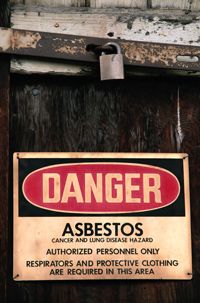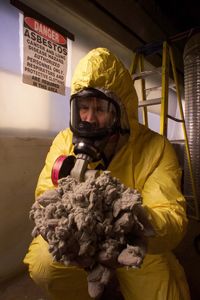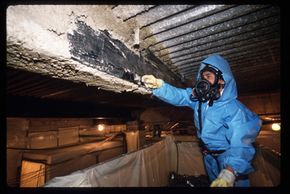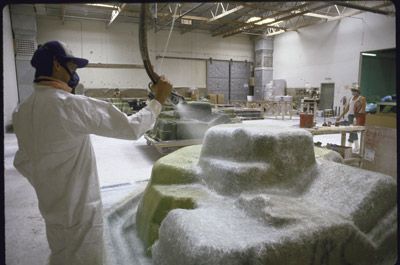If asbestos is such a danger, and we've been removing it since the 1980s, shouldn't it all be gone by now? You would think so, but even though it seems like we've had a lot of time to get it out of our homes, schools and workplaces, asbestos has been around for 3,000 years, so it's had a head start. Getting rid of asbestos isn't as easy as changing your clothes. Besides, it's not such a villain as long as it isn't disturbed.
Asbestos hasn't been produced in the United States since 2002. However, the United States still imports approximately 3,000 tons per year, and there are plenty of older buildings where asbestos still resides [source: Asbestos Project Plan]. Why? Because removing it can be more dangerous than leaving the original substance intact; if it's properly sealed and left undisturbed, asbestos doesn't pose a danger to us. Asbestos is in fact a naturally occurring substance, so we're all exposed to some degree. The difference between most people and the danger zone is the amount of exposure.
Advertisement
With asbestos, the problem comes when we inhale the fibers. And while we exhale a lot of them right back out of our system, some of the fibers can stick around and scratch our lungs, causing scarring and inflammation that can lead to a variety of serious respiratory diseases. These fibers, which are used in construction materials because of their durability, build up over time and are strong enough to stay in our lungs forever. So even though we may feel fine now, the same fibers we breathe in today could give us cancer 30 years from now.
But what exactly is asbestos? And how can we protect ourselves and our loved ones from its dangers? In this article, we'll explore asbestos and what you need to know.
Advertisement






